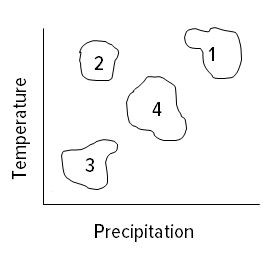The "age of dinosaurs" lasted about 120 million years and included the _____ periods.
A. Jurassic and Cretaceous
B. Triassic and Jurassic
C. Carboniferous and Permian
D. Cretaceous and Tertiary
E. Cambrian and Ordovician
A. Jurassic and Cretaceous
You might also like to view...
An individual's ability to excel in certain types of sports may be due to different muscle fiber types
Certain muscle types allow some people, like marathoners, to have the ability to be involved in sports which require sustained activity of their muscles, while other muscle types, like in sprinters, allow people to excel in sports which require a rapid burst of muscle activity but fatigue quickly. The sustained activity of muscles in marathon runners is due to the higher yield of ATP per glucose. What differences would you predict for marathoners' muscles compared to sprinters'? What will be an ideal response?
As the number of angiosperm species rose, what happened to the number of species of most other groups of land plants?
A. They increased. B. They decreased. C. They stayed roughly the same.
Biomes are broad regional areas with defined flora and fauna. Which one of the following choices correctly identifies the biomes shown plotted in the graph of precipitation versus temperature? 
A. Tropical Rain forest = 3; Desert = 4; Tundra = 1; Grassland = 2 B. Tropical Rain forest = 1; Desert = 3; Tundra = 4; Grassland = 2 C. Tropical Rain forest = 1; Desert = 2; Tundra = 3; Grassland = 4 D. Tropical Rain forest = 3; Desert = 1; Tundra = 2; Grassland = 3
Which type of membrane transport is most important for nutrient acquisition in nutrient poor environments?
A. Simple diffusion B. Active transport C. Facilitated diffusion through membrane carrier proteins D. Facilitated diffusion through channel proteins